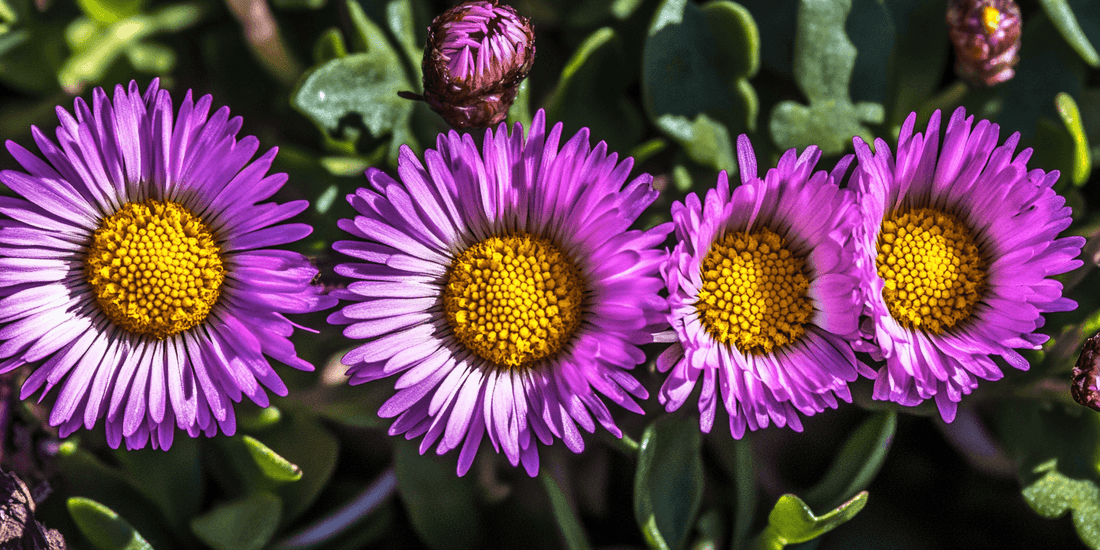Daisies are a timeless favorite among gardeners, celebrated for their cheerful blooms and easy care. While the classic white-petaled varieties remain popular, there is a fascinating world of rare daisy species waiting to be discovered. These exotic daisy varieties not only add visual interest to your garden but also support biodiversity and sustainable gardening practices. In this guide, we’ll delve into three exceptional types: rare daisy species, the Poached Egg Daisy, and the Blue-Eyed African Daisy.
Rare Daisy Species: A Treasure Trove of Unique Garden Flowers
Rare daisy species offer a remarkable way to elevate the beauty and ecological value of your garden. Unlike the familiar Shasta daisies, these uncommon garden plants often feature striking colors, textures, and growth habits that make them a standout addition. Many rare flowering plants also thrive in challenging environments, making them ideal for eco-conscious gardeners seeking sustainable solutions.
Examples of Rare Daisy Species
Some rare daisies are native to remote or specialized ecosystems, making them prized for their unique characteristics:
- Cape Daisy (Arctotis fastuosa): A vibrant choice for arid gardens, this South African native features orange and gold petals that radiate warmth.
- Ox-Eye Daisy (Leucanthemum vulgare): While not rare globally, local wildflower variations can provide a naturalized aesthetic in organic gardens.
- Transvaal Daisy (Gerbera jamesonii): Known for its large, vivid blooms, this species offers a spectrum of colors that cater to diverse design preferences.
By integrating these rare daisy species into your garden, you not only create a visually striking landscape but also contribute to the preservation of daisy biodiversity. Many of these plants can be grown using organic methods, such as compost-enriched soil and natural pest deterrents.
The Poached Egg Daisy: A Delightful Addition to Any Garden
The Poached Egg Daisy (Polycalymma stuartii), named for its sunny yellow center and white outer petals, is a charming plant native to Australia. This unique daisy thrives in sandy, well-drained soils, making it perfect for xeriscaping or gardens in arid regions.
Cultivating Poached Egg Daisy
Growing Poached Egg Daisies organically is straightforward:
- Soil Preparation: Use a mix of sandy soil and organic compost to create an ideal growing medium.
- Watering: As a drought-tolerant species, this daisy requires minimal watering once established.
- Companion Planting: Pair it with other drought-tolerant plants, such as lavender or yarrow, to create a low-maintenance, water-wise garden.
Benefits of Poached Egg Daisy
This plant offers more than just aesthetics:
- Pollinator Attraction: The bright blooms are a magnet for bees and butterflies, contributing to a healthy garden ecosystem.
- Erosion Control: Its robust root system helps stabilize soil in sloped areas.
The Poached Egg Daisy is an excellent choice for gardeners seeking rare flowering plants that are both beautiful and functional.
The Blue-Eyed African Daisy: A Showstopper in Bloom
The Blue-Eyed African Daisy (Dimorphotheca ecklonis) captivates with its striking combination of white or purple petals and a vivid blue center. Native to South Africa, this exotic daisy variety is well-suited for sunny gardens and is known for its long blooming season.
Growing Blue-Eyed African Daisy
For gardeners interested in organic and sustainable methods, the Blue-Eyed African Daisy is a rewarding choice:
- Planting Site: Choose a sunny location with well-drained soil to encourage vigorous growth.
- Organic Fertilizers: Use fish emulsion or compost tea to provide essential nutrients without relying on synthetic chemicals.
- Pest Management: Attract natural predators like ladybugs to control aphids and other pests.
Unique Features
This daisy’s vibrant colors and hardy nature make it a favorite among gardeners looking for unique daisies:
- Versatility: Perfect for borders, containers, or as ground cover.
- Heat Tolerance: Thrives in hot climates, reducing the need for supplemental watering.
- Extended Blooming: Produces flowers from spring to fall, adding continuous beauty to your garden.
Adding Blue-Eyed African Daisies to your landscape not only enhances its visual appeal but also promotes sustainable gardening practices.
Incorporating Uncommon Daisies into Organic Gardens
Uncommon daisy varieties are not only visually stunning but also align well with organic and sustainable gardening principles. By choosing native or drought-tolerant species, gardeners can reduce water usage, minimize chemical inputs, and create habitats for beneficial insects.
Tips for Organic Daisy Care
- Natural Fertilizers: Enrich your soil with organic matter, such as aged manure or worm castings, to provide a steady nutrient supply.
- Mulching: Use organic mulch to retain moisture and suppress weeds around your daisies.
- Integrated Pest Management: Encourage biodiversity by planting companion species that deter pests naturally.
By adopting these practices, you can ensure that your garden remains a thriving and environmentally friendly space.
In Summary
Uncommon daisy varieties like rare daisy species, the Poached Egg Daisy, and the Blue-Eyed African Daisy offer exciting opportunities to diversify your garden with unique, sustainable, and visually captivating plants. These rare flowering plants not only enhance the beauty of your landscape but also support pollinators, reduce water use, and promote soil health. By incorporating these exceptional daisies into your garden, you can create a vibrant, eco-friendly oasis that stands out in any neighborhood.
For gardeners interested in waterwise landscaping, see our article on Drought-Tolerant Daisy Species for Sustainable Gardening, which highlights hardy daisy varieties that conserve water while supporting pollinators and eco-friendly gardens.

